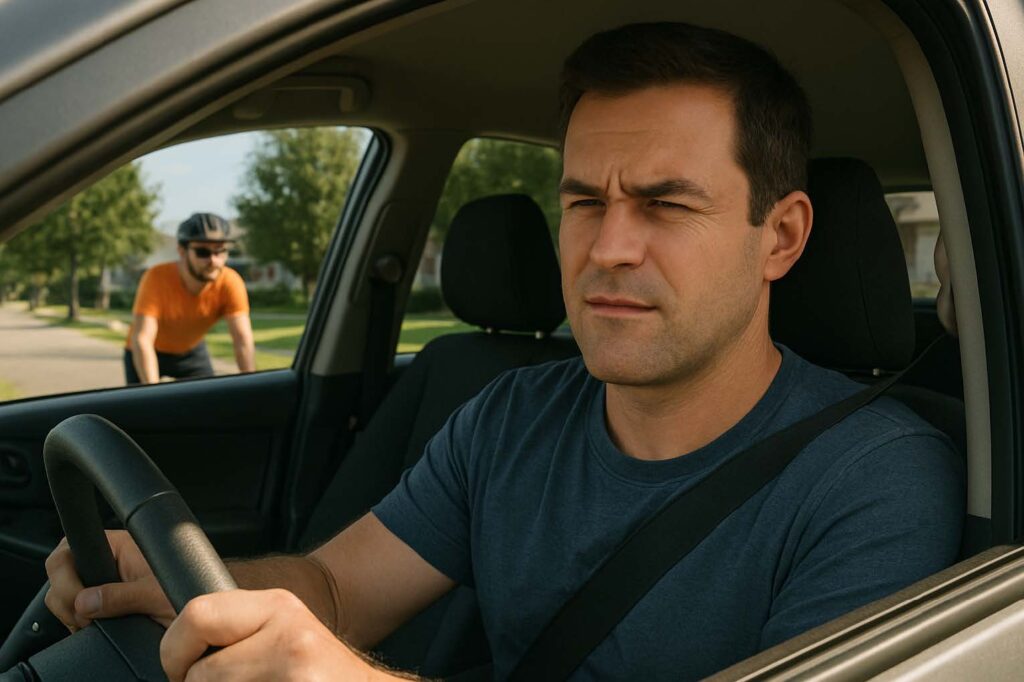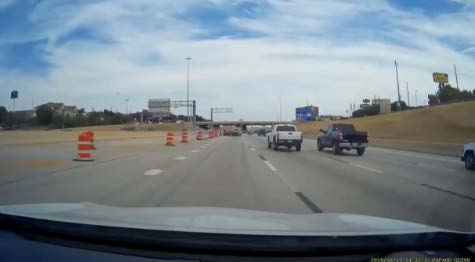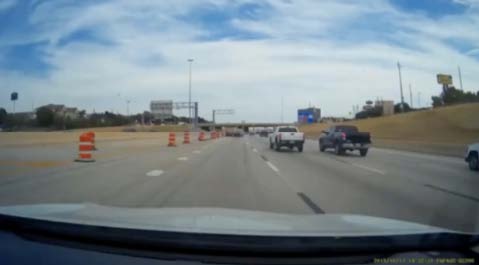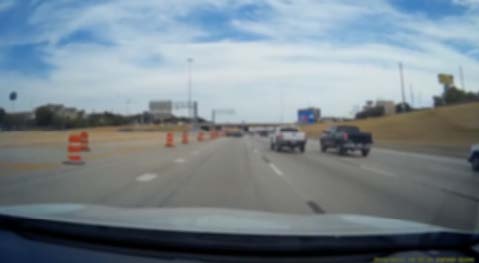By Adriana Geremia
June 18, 2025
Through a Blurred Lens: How One Common Type of Visual Impairment Impacts Road Safety for Drivers and Pedestrians.
An interview with Dr. Anna Kosovicheva, the Co-Director of The Applied Perception and Psychophysics Laboratory (APPLY), can provide insight into one potential cause of car accidents.

© S. Guidi, A. Kosovicheva, & B. Wolfe, n.d., CC BY 4.0 (https://creativecommons.org/licenses/by/4.0/)
Picture yourself driving through downtown Toronto. A car suddenly merges into your lane without signalling. You tap the brakes and mutter, “unbelievable, watch where you’re going.” Later that day, you’re heading home when a cyclist suddenly appears on the crosswalk just ahead. You swerve at the last second, just missing them. The moment is unsettling, leaving you wondering how you hadn’t seen them, and then you remember, you forgot your glasses at home.
An interview with Dr. Anna Kosovicheva, the Co-Director of The Applied Perception and Psychophysics Laboratory (APPLY) at the University of Toronto’s, can provide insight into one potential cause of car accidents like the one presented here: blurred vision caused by not wearing necessary corrective lenses.
According to Dr. Kosovicheva, “Some of the most common causes of blur are what we call uncorrected refractive error.” In these cases, the image presented on the back of the eye is not focused correctly. Nearsightedness–characterized by clear close vision and blurry distance vision–is among the most common types of uncorrected refractive error. When we drive, “we’re looking at far distances. If you are nearsighted …you’re going to suffer from blur (less detail).”
Dr. Kosovicheva’s statements align with the World Health Organization’s claim that refractive errors are the second most common cause of visual impairment worldwide (World Health Organization, 2023). Dr. Kosovicheva, Dr. Ben Wolfe, and PhD student Silvia Guidi, in their research article titled “Seeing the truck but missing the cyclist: effects of blur on duration thresholds for road hazard detection,” published in the journal Cognitive Research: Principles and Implications, investigated how this type of blur affects the time people need to look at videos to detect road hazards. They also examined whether detection time differs by hazard type and driver age.
The researchers asked 160 people with self-reported 20/20 vision to watch dashboard camera videos depicting hazardous driving situations. Half of these people were between 55 and 74 years old, and the other half were between 20 and 35 years old. These videos feature variations in hazard types, blur, weather, and lighting conditions. To examine the effect of blur, participants watched driving videos and indicated whether a hazard was present, under no blur, low blur, and high blur conditions as shown below.



From left to right, the “no blur”, “low blur”, and “high blur” conditions viewed by participants. © S. Guidi, A. Kosovicheva, & B. Wolfe, n.d., CC BY 4.0 (https://creativecommons.org/licenses/by/4.0/).
The experiments identified three important findings for every road user to be aware of. As one might expect, high-blur conditions, but not low-blur conditions, require a longer viewing time to detect all road hazards. Non-vehicular hazards (pedestrians, cyclists, and animals) required significantly more viewing time compared to non-vehicular hazards (cars and trucks). Finally, older adults required significantly more viewing time to detect hazards, regardless of blur level or hazard type.
Suppose we apply these findings to the scenarios previously presented. In that case, it suggests that all drivers are more likely to detect a vehicle compared to a cyclist. In addition, older drivers need more time to notice that a hazard is present. Both older and younger drivers also need more time to detect hazards on the road when their vision is blurred, particularly for cyclists compared to other vehicles. This means that you might need more time to respond to a cyclist on the road if you left your glasses at home.
When asked about the real-life risk of high blur for drivers, Dr. Kosovicheva stated that for non-vehicular hazards, about “an extra 176 milliseconds of viewing time needed.” It’s “the equivalent of a car’s length at highway speeds…like following the car ahead of you just a little too closely”. While it may not seem like a substantial increase in time, Dr. Kosovicheva stated, “It could be enough to make a difference between a pretty serious collision versus a less serious one or a collision versus even not a collision, depending on the exact situation.”
According to Dr. Kosovicheva, the two blur levels were chosen because they were “the kinds of blur that you might not necessarily notice.” Despite being labelled as “high” or “low” blur conditions, they only slightly degraded the videos. She highlighted that these conditions were “intended to capture two levels…a little bit below, a little bit above, what you might expect to be a threshold for licensure.”
This insight may help explain why the low blur condition showed no difference in viewing time needed compared to the no blur condition. There may be a relatively small amount of blur that drivers can adapt to, which does not affect their hazard detection. However, Dr. Kosovicheva explains, “When we’re driving, we need to do so much more than detect hazards; we need to be able to read road signs, and … see pretty far ahead… to judge braking distance appropriately.” Regardless of whether someone has vision similar to that of the low or high blur conditions, she indicated that “a good optometrist will prescribe some kind of correction.”
While there may be some skepticism around whether the results found utilizing dashboard recordings can be applied to expected behaviours in real-life driving conditions, Dr. Kosovichevaa indicated that their experimental conditions are pretty realistic. When asked about this issue, she said her lab must always find a “balance between experimental control and realism.” According to Dr. Kosovicheva, one limitation is that these dashboard videos cannot properly capture some visual characteristics of these scenes, such as depth perception. She said, “…we can’t easily capture how blur changes as a function of distance.” However, she also explained that researchers cannot ethically “put people in a vehicle with glasses that blur their vision and tell them ‘Okay, now go drive on the 401’.” Therefore, to measure hazard detection safely, they show dashboard camera videos depicting many real dangerous driving situations that her lab has collected from the internet over many years.
These findings may lead people to wonder whether older drivers should be required to renew their licenses more frequently. When I asked Dr. Kosovicheva about this concept, she said, “It’s hard to say because, depending on the eye condition, vision can degrade rapidly.” “Licence renewals, in Ontario at least, are every five years. And over the course of five years, people’s vision can degrade substantially… and people can just fail to notice.” She indicated that renewing licences, even every 2-3 years, is a burden from an administrative standpoint, and the best intervention for licensed Canadian drivers is to have frequent vision checkups.
These findings highlight the need for every individual to get a yearly eye exam and for nearsighted individuals to always wear their glasses or contacts while driving. Even if a nearsighted individual has relatively minor visual impairments, they can still have difficulty detecting hazards.
World Health Organization. (2023, August 10). Blindness and vision impairment. https://www.who.int/news-room/fact-sheets/detail/blindness-and-visual-impairment#:~:text=The%20leading%20causes%20of%20vision,are%20refractive %20errors%20and%20cataracts.
